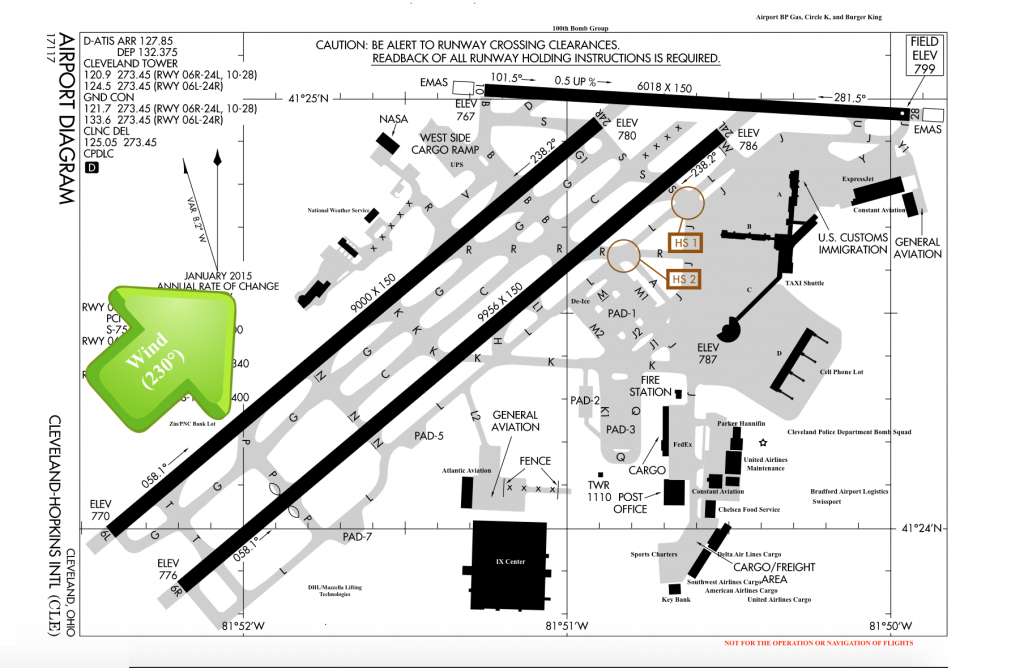Which runway is a plane landing on?
When a plane comes into an airport to land, they will attempt to land on the runway which is best aligned with the wind. This means that when landing, pilots attempt to land “into the wind” as much as possible. This gives the plane the greatest amount of airflow over the wings, and therefore greater lift, without an increase in speed.
Before landing, pilots obtain weather information, either from ATIS (automatic terminal information service), ASOS (automatic surface observation service), AWOS (automated weather observation system), HIWAS (hazardous inflight weather advisory service), or from ATC.
The wind is reported as the magnetic direction that the wind is blowing from, followed by the speed in knots (Nautical miles per hour). There is other important information obtained as well, but for this discussion, we will talk about the wind part only.
For example:
An ATIS broadcast for Hopkins airport may sound like this:
“Cleveland Hopkins airport information sierra, two two five zero Zulu weather, wind two three zero at eight, visibility one zero, sky condition, few clouds at three thousand, temperature two eight, dew point two six, altimeter two niner niner eight.”
The reported wind is “two three zero at eight”, which means that the wind is coming out of the southwest, from a bearing of 230° degrees, at 8 knots. The preferred landing runway should be oriented towards the south or west, as close to this bearing as possible. If we look at the diagram for Hopkins airport, we see that there is a pair of runways that are predominately to the southwest, and those are runway 24L/24R. When landing on this runway, with a wind from 230°, the pilot would have a slight left headwind do deal with, but still aligned “into the wind”, more than any other runway, and this would be the best choice for landing in this situation.
Usually, Hopkins will use one of the runways primarily for departures, and the other one for arrivals.

Cleveland Hopkins International Airport
Some airports have different criteria for landing and departing traffic, based on approach / departure requirements, ground handling, or other issues. At KCLE, the 06L&R /24L&R runways are the most heavily used, with occasional landings on runway 10 depending on wind conditions. On heavy crosswind days, runway 28 is also used for landings, but this is rarely used as it significantly lengthens the final approach path for inbound aircraft. Even as this runway will be used for landings, takeoffs will still generally be on the 24’s due to the greater length of these runways.
The runway selection at a large airport is generally predicated by the planes taking off, not the planes that are landing. The planes in the air are already airborne, and if a problem arises, they can go around. However, a plane on the ground needs all the help it can get (by being as much “into the wind” as possible) to takeoff. Runway length also plays into the equation, and that is why the 24’s or 06’s are still generally preferred for takeoffs.
Larger jets can generally handle a pretty strong crosswind, and do not have too many problems landing on a runway that is not perfectly aligned with the wind. Pilots flying into larger tower controlled airports will follow the instructions of ATC as to which runway to land on. However, if a pilot is flying into an uncontrolled field, both takeoff and landing will be into the wind as much as possible.
Idea for this page compliments Houstonspotters.net





